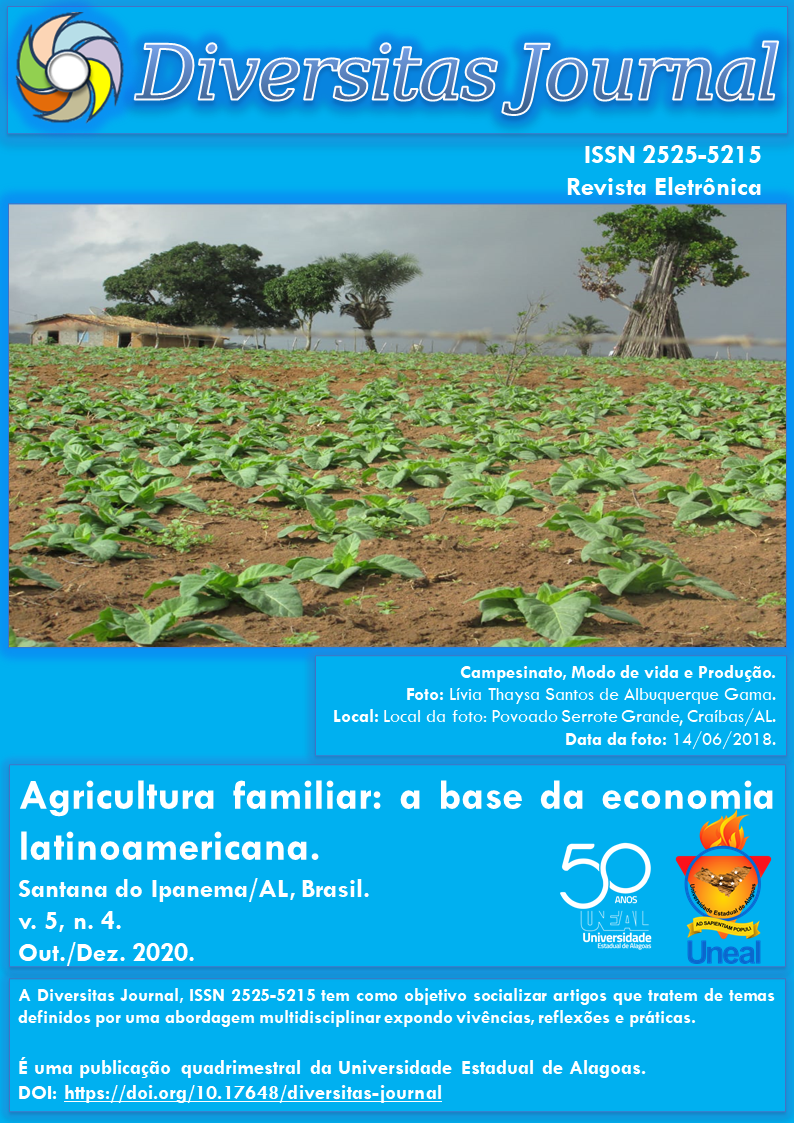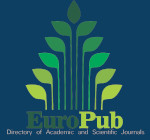Incidência de Esquistossomose Mansônica no Nordeste brasileiro, no período de 2013 a 2017
DOI:
https://doi.org/10.17648/diversitas-journal-v5i4-984Abstract
ABSTRACT: Schistosomiasis is an infectious disease, initially asymptomatic, which can progress to extremely severe clinical forms and lead the patient to death. Although it presents a reduction in morbidity and mortality indicators, it is still considered a serious public health problem in northeastern Brazil. The present study aims to analyze the occurrence of Schistosomiasis prevalent in the Northeast region, in the period from 2013 to 2017. It is a descriptive epidemiological study, in which it was carried out based on the analysis of secondary data provided by the Notifiable Diseases Information System (SINAN). The years 2014 (1419 cases), 2015 (1483 cases) and 2017 (1220 cases) stand out with the highest prevalence of the disease in the states of Bahia with 3226 cases, Pernambuco with 1442 and Sergipe 559 cases. The data indicate that 2876 patients were cured, 116 people were not cured and 256 people died. There was a higher occurrence of the disease in adults, especially the age groups between 20 and 59 years old. As for the residential area notified by SINAN, it was possible to verify that 3926 people infected with the disease live in the urban area, 2099 in the rural area and 44 in the peri-urban area. There was a higher rate of positive cases for Schistosomiasis mansonic in the urban area, with 61% of cases. The collected data indicate an endemic occurrence of Schistosomiasis in Northeast Brazil. Becoming indispensable measures to prevent the risk of contamination of the disease.
KEYWORD: Epidemiology, Public Health, Schistosoma Mansoni.
Metrics
Downloads
Published
How to Cite
Issue
Section
License
Copyright (c) 2020 Fernanda Stefanny Lima Sobrinho, Mayara Camila Santos Silva, Luan Lucas Cardoso Lima, Grace Kelly Lima Sobrinho, Esmeralda Aparecida Porto Lopes, Ana Paula Sampaio Feitosa

This work is licensed under a Creative Commons Attribution 4.0 International License.
The Diversitas Journal expresses that the articles are the sole responsibility of the Authors, who are familiar with Brazilian and international legislation.
Articles are peer-reviewed and care should be taken to warn of the possible incidence of plagiarism. However, plagiarism is an indisputable action by the authors.
The violation of copyright is a crime, provided for in article 184 of the Brazilian Penal Code: “Art. 184 Violating copyright and related rights: Penalty - detention, from 3 (three) months to 1 (one) year, or fine. § 1 If the violation consists of total or partial reproduction, for the purpose of direct or indirect profit, by any means or process, of intellectual work, interpretation, performance or phonogram, without the express authorization of the author, the performer, the producer , as the case may be, or whoever represents them: Penalty - imprisonment, from 2 (two) to 4 (four) years, and a fine. ”















.png)




